Browse the history book on the origin of settlement in Quebec
The digs completed on the Cliche-Rancourt site in the Eastern Townships have enabled the discovery of indicators of human presence dating back around 12 000 years BP. It is the oldest recognized site in Quebec. Where did the first arrivals come from? Why were they here? What happened next? Find out through this animated book.
Note: An HTML version is available here should you experience issues.
Settlement of the Eastern Townships
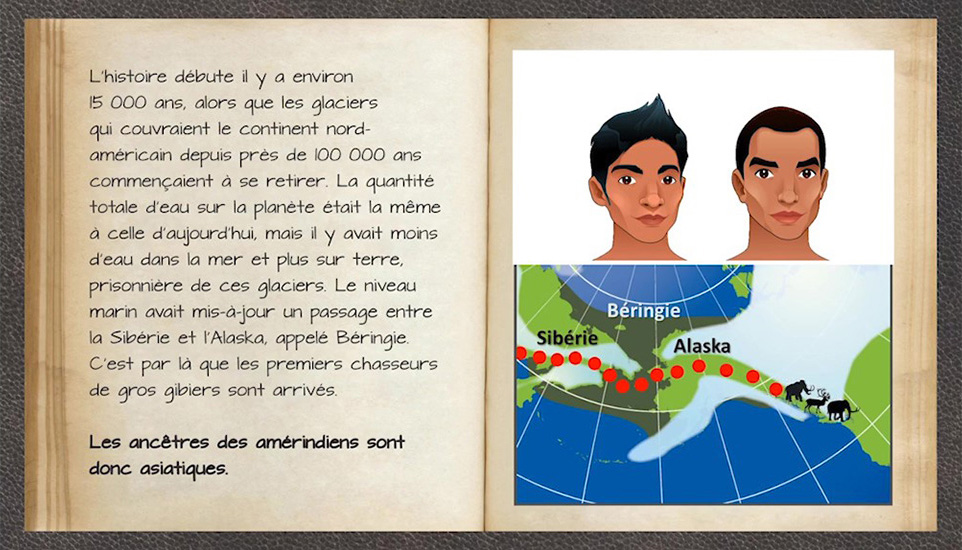
Pages 1-2
History began about 15 000 years, although the glaciers covering the North American continent for almost 100 000 years began to retreat. The total quantity of water on the planet was the same as it is today, but there was less water in the ocean and more on the land, trapped in glaciers. The sea level revealed a passage between Siberia and Alaska, called Beringia. It was through this passage that the first big game hunters arrived. The ancestors of the Amerindians are therefore Asian.
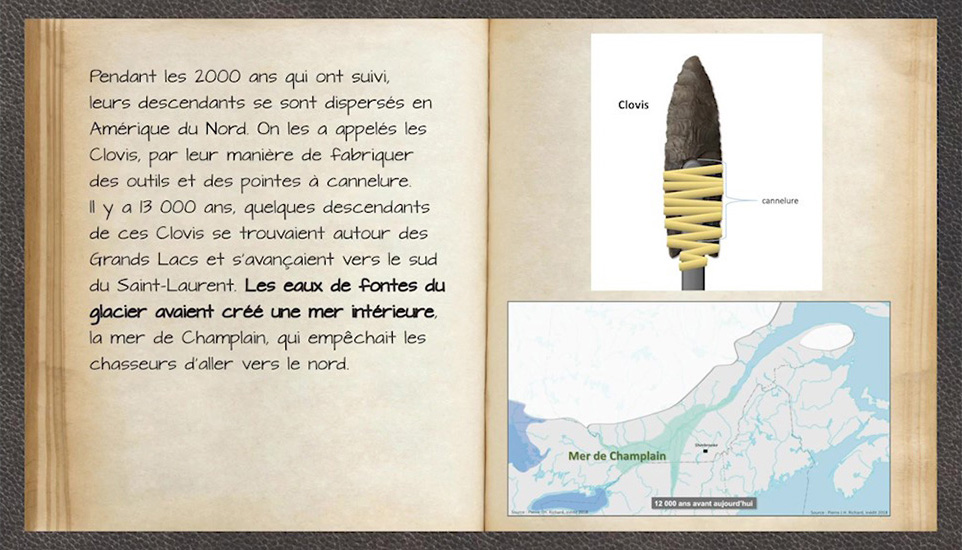
Pages 3-4
For the next 2 000 years, their descendants were dispersed around North America. They are called the Clovis due to their method of making tools and fluted points. 13 000 years ago, some Clovis descendants were around the Great Lakes and advancing towards the south of the St. Lawrence. Melting water from glaciers created an inland sea, the Champlain Sea, which prevented hunters from advancing to the north.
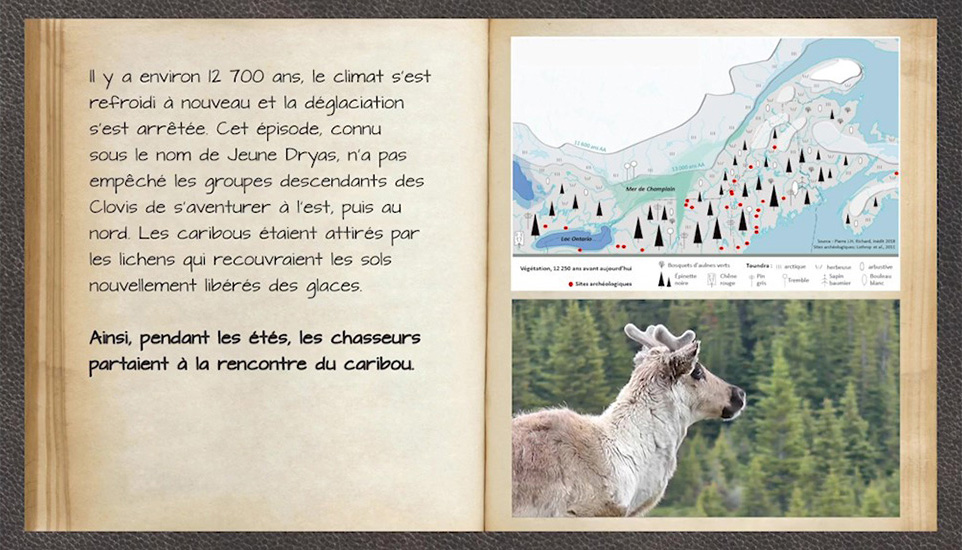
Pages 5-6
Around 12 700 years ago, the climate cooled once again and deglaciation ceased. This event, known as the Younger Dryas, did not prevent the descendant groups of the Clovis from venturing east and then north. Caribou were attracted by the lichens freshly freed from ice covering the soil. Thus, during summer, hunters went out for caribou.
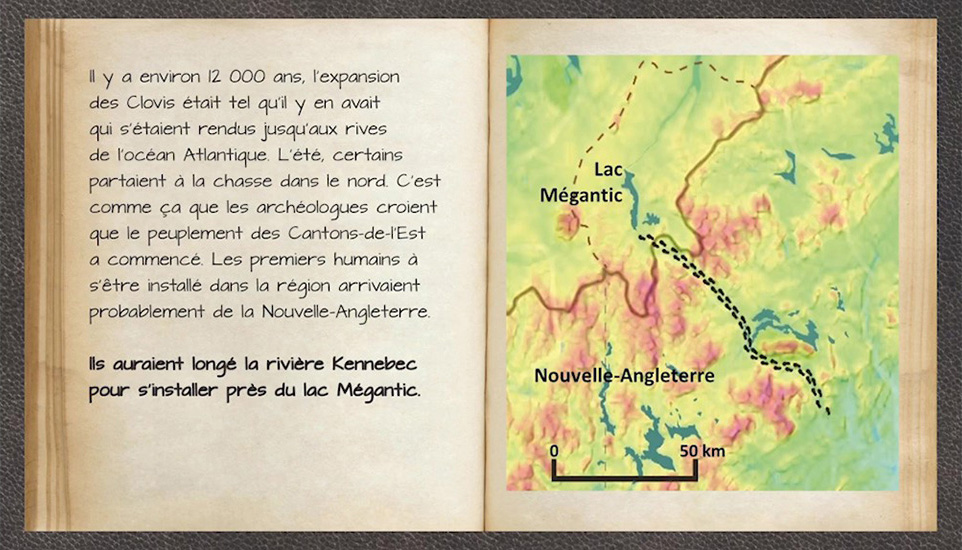
Pages 7-8
Around 12 000 years ago, the expansion of the Clovis reached all the way to the Atlantic Ocean. In summer, some went hunting to the north. This is how archaeologists believe the settlement of the Eastern Townships began. The first humans to settle in the region probably arrived from New England. They followed the Kennebec River to settle near Lake Megantic.
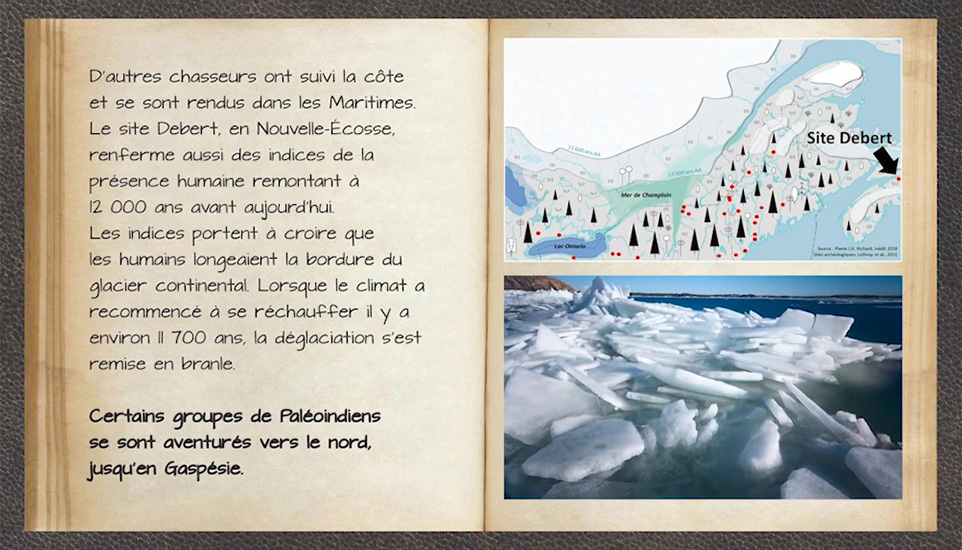
Pages 9-10
Other hunters followed the coastline and reached the Maritimes. The Debert site in Nova Scotia also contained indicators of human presence dating from 12 000 years before present. The indicators led to the belief that humans followed the edge of the continental glacier. When the climate began to warm up around 11 700 years ago, deglaciation resumed. Some Palaeoindian groups ventured towards the north, up to the Gaspésie.
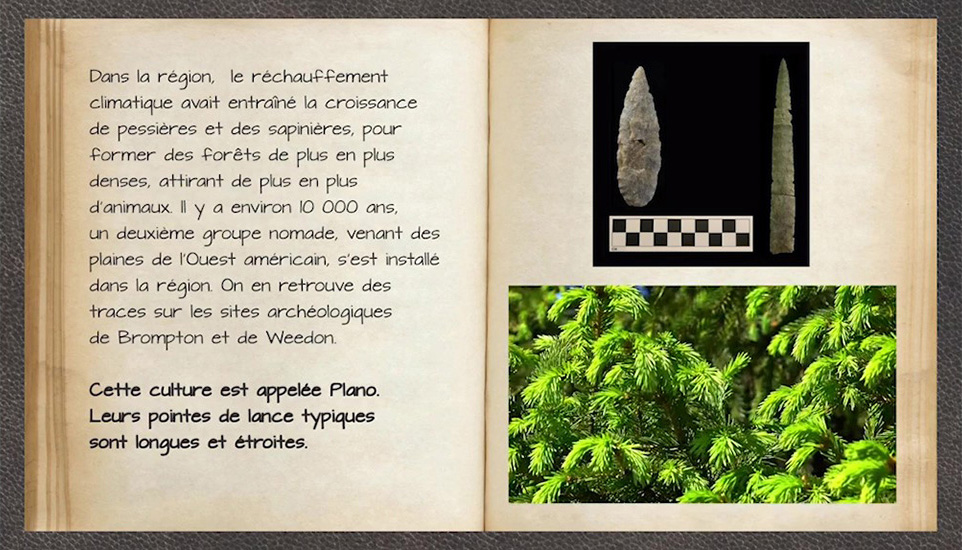
Pages 11-12
In the region, climate warming caused a growth in spruce and fir, which formed increasingly dense forests, attracting more and more animals. Around 10 000 years ago, a second nomadic group from the American West settled in the region. Traces were found on the archaeological sites in Brompton and Weedon. They are known as the Plano culture. The lance points of this culture are elongated and narrow.

Pages 13-14
For the next 6 000 years, warmer temperatures continued to be conducive to the diversification of fauna and flora. Maple trees were free-growing. The use of new resources brought a transition of tool-making techniques. The Archaic culture arrived with its fish hooks, bone needles, and polished tools, such as hatchets and gouges.
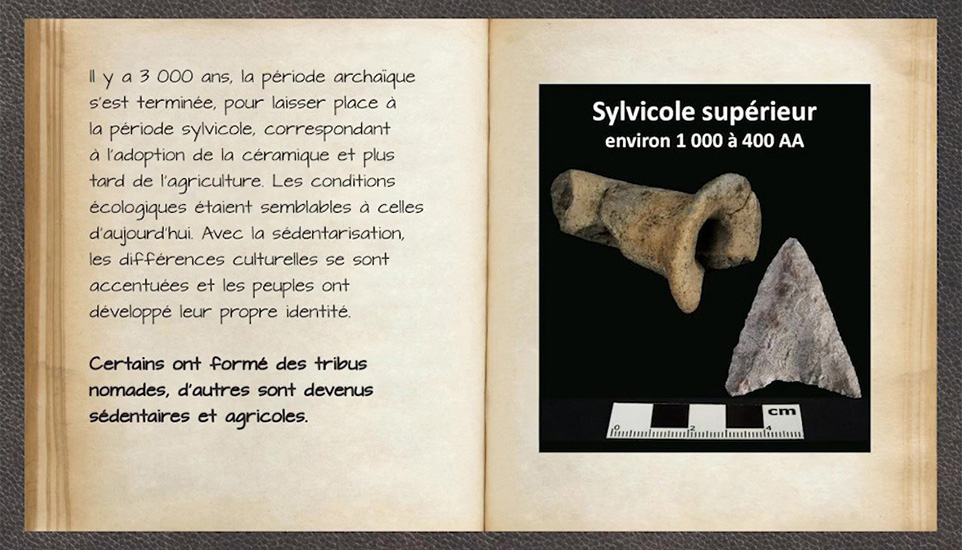
Pages 15-16
3 000 years ago, the Archaic period ended to be replaced by the Woodland period, corresponding with the adoption of ceramic and later agriculture. Ecological conditions were similar to those of today. As people became sedentary, the gap between cultural differences widened and different people developed their own identity. Some formed nomad tribes, while others became sedentary and practised farming.
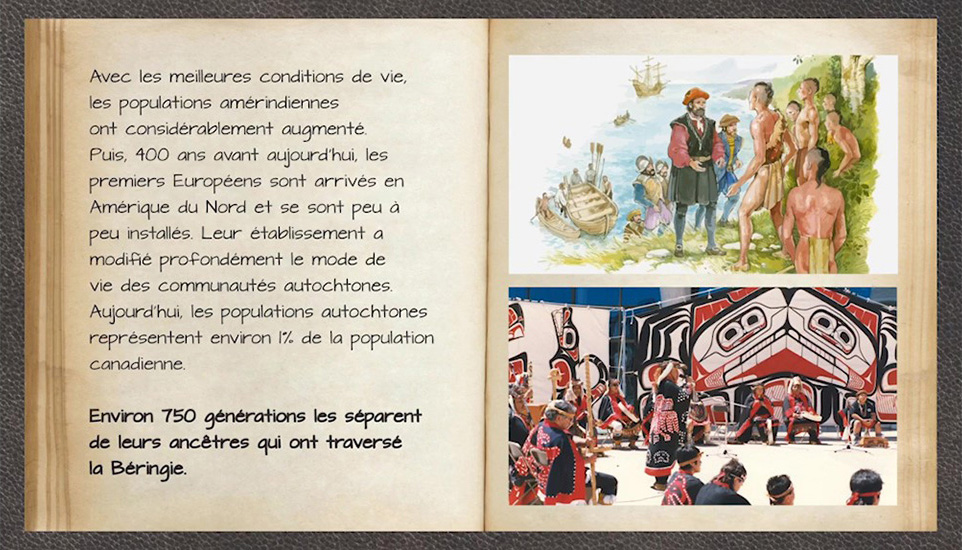
Pages 17-18
Improvements in living conditions led to considerable growth in indigenous populations. Then, some 400 years before today, the first Europeans arrived in North America and gradually settled. Their arrival and settlement profoundly transformed the way of life of Indigenous peoples. Today, Indigenous peoples represent about 1% of Canada’s population. About 750 generations separate them from their ancestors who crossed Beringia.

